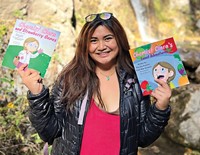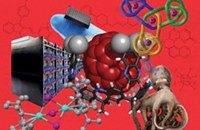Advertisement
Grab your lab coat. Let's get started
Welcome!
Welcome!
Create an account below to get 6 C&EN articles per month, receive newsletters and more - all free.
It seems this is your first time logging in online. Please enter the following information to continue.
As an ACS member you automatically get access to this site. All we need is few more details to create your reading experience.
Not you? Sign in with a different account.
Not you? Sign in with a different account.
ERROR 1
ERROR 1
ERROR 2
ERROR 2
ERROR 2
ERROR 2
ERROR 2
Password and Confirm password must match.
If you have an ACS member number, please enter it here so we can link this account to your membership. (optional)
ERROR 2
ACS values your privacy. By submitting your information, you are gaining access to C&EN and subscribing to our weekly newsletter. We use the information you provide to make your reading experience better, and we will never sell your data to third party members.
Biochemistry
The Art Of Biochemistry
Briony Marshall’s sculptures attempt to make sense of what science means for humans
by Alex Scott
January 13, 2014
| A version of this story appeared in
Volume 92, Issue 2
In this slideshow, C&EN displays photographs of the work of sculptor Briony Marshall and provides her perspectives on the role of science in her artistic process. The photos are of sculptures that were shown at Gallery Pangolin in London last summer in an exhibition called “Life Forming.” Marshall, who trained as a biochemist, was the 2012 Sculptor in Residence at the Pangolin.
Based in London, Marshall studied biochemistry at the University of Oxford. She chose not to pursue a career in science because she thought that research could be a slow and lonely process. She is, however, still fascinated by science, and much of her art is inspired by biochemistry and the form of DNA. As an artist she enjoys spending time researching a wide variety of fields, without having to select just one specialty.
Looking ahead, Marshall has already picked out a scientific theme that she might next incorporate into her art. “I am not sure yet, and I hesitate slightly because it is such an in-fashion area, but I am fascinated by the amazing developments in neuroscience, and in particular how I might understand the neuroscience of the creative process from a very personal point of view,” she says. “The reading I’ve done in the area has already helped me develop techniques for getting in the zone and overcoming creative blocks or just the creative inertia that happens almost every Monday morning. As usual, though, I have no idea how this might translate into sculptures.”




Join the conversation
Contact the reporter
Submit a Letter to the Editor for publication
Engage with us on Twitter